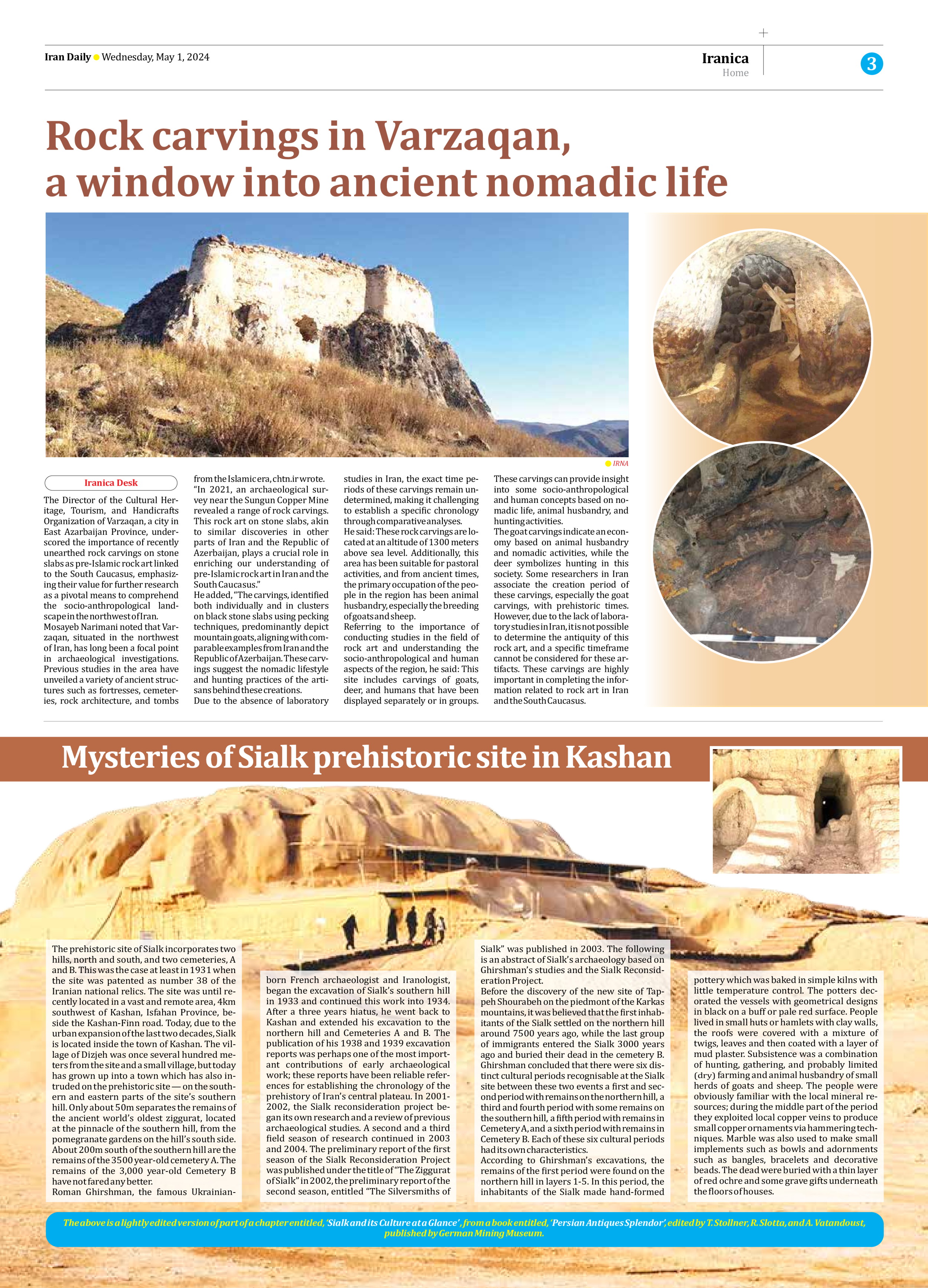
Copy in clipboard...
Mysteries of Sialk prehistoric site in Kashan
Roman Ghirshman, the famous Ukrainian-born French archaeologist and Iranologist, began the excavation of Sialk’s southern hill in 1933 and continued this work into 1934. After a three years hiatus, he went back to Kashan and extended his excavation to the northern hill and Cemeteries A and B. The publication of his 1938 and 1939 excavation reports was perhaps one of the most important contributions of early archaeological work; these reports have been reliable references for establishing the chronology of the prehistory of Iran’s central plateau. In 2001-2002, the Sialk reconsideration project began its own research and a review of previous archaeological studies. A second and a third field season of research continued in 2003 and 2004. The preliminary report of the first season of the Sialk Reconsideration Project was published under the title of “The Ziggurat of Sialk” in 2002, the preliminary report of the second season, entitled “The Silversmiths of Sialk” was published in 2003. The following is an abstract of Sialk’s archaeology based on Ghirshman’s studies and the Sialk Reconsideration Project.
Before the discovery of the new site of Tappeh Shourabeh on the piedmont of the Karkas mountains, it was believed that the first inhabitants of the Sialk settled on the northern hill around 7500 years ago, while the last group of immigrants entered the Sialk 3000 years ago and buried their dead in the cemetery B. Ghirshman concluded that there were six distinct cultural periods recognisable at the Sialk site between these two events a first and second period with remains on the northern hill, a third and fourth period with some remains on the southern hill, a fifth period with remains in Cemetery A, and a sixth period with remains in Cemetery B. Each of these six cultural periods had its own characteristics.
According to Ghirshman’s excavations, the remains of the first period were found on the northern hill in layers 1-5. In this period, the inhabitants of the Sialk made hand-formed pottery which was baked in simple kilns with little temperature control. The potters decorated the vessels with geometrical designs in black on a buff or pale red surface. People lived in small huts or hamlets with clay walls, the roofs were covered with a mixture of twigs, leaves and then coated with a layer of mud plaster. Subsistence was a combination of hunting, gathering, and probably limited (dry) farming and animal husbandry of small herds of goats and sheep. The people were obviously familiar with the local mineral resources; during the middle part of the period they exploited local copper veins to produce small copper ornaments via hammering techniques. Marble was also used to make small implements such as bowls and adornments such as bangles, bracelets and decorative beads. The dead were buried with a thin layer of red ochre and some grave gifts underneath the floors of houses.







